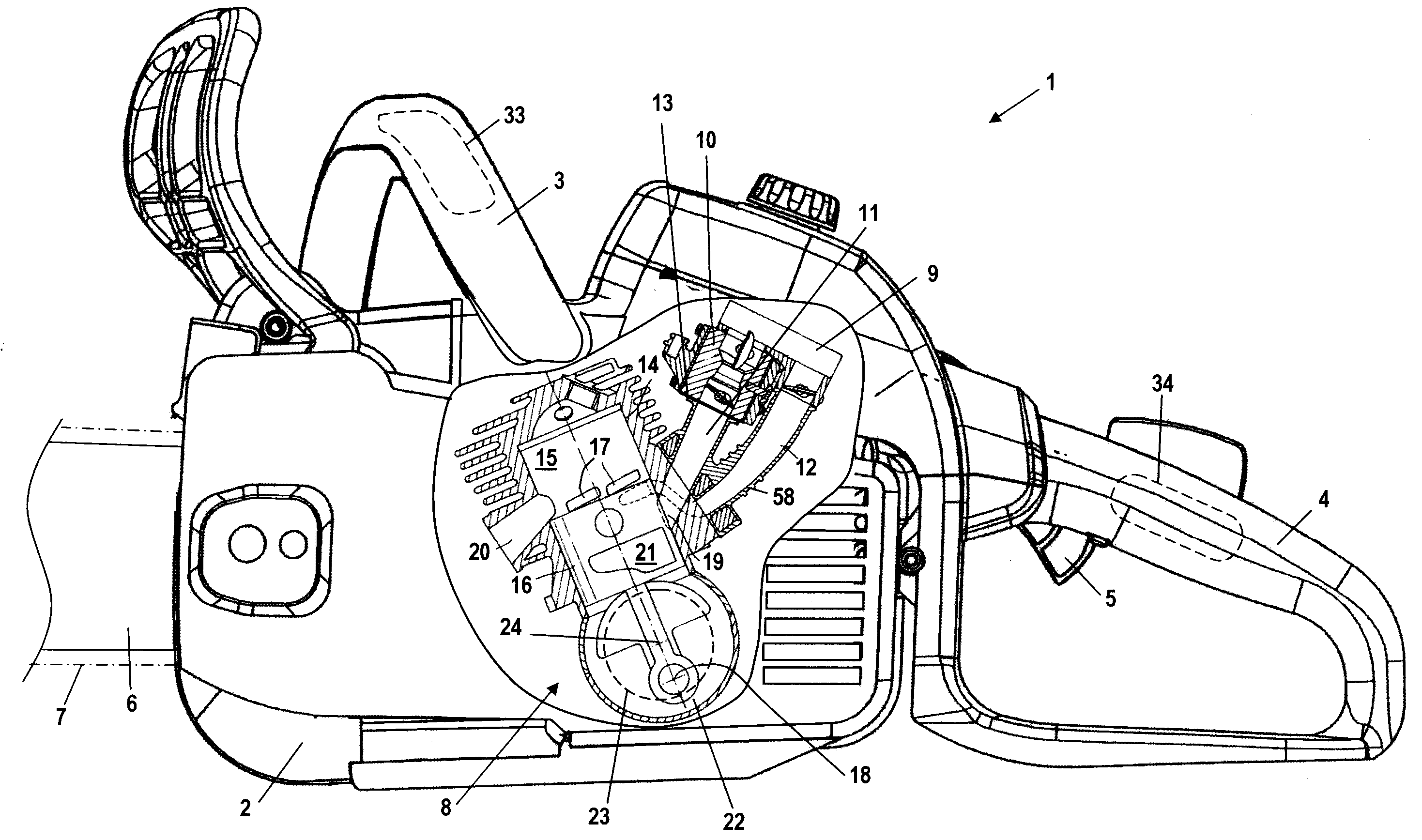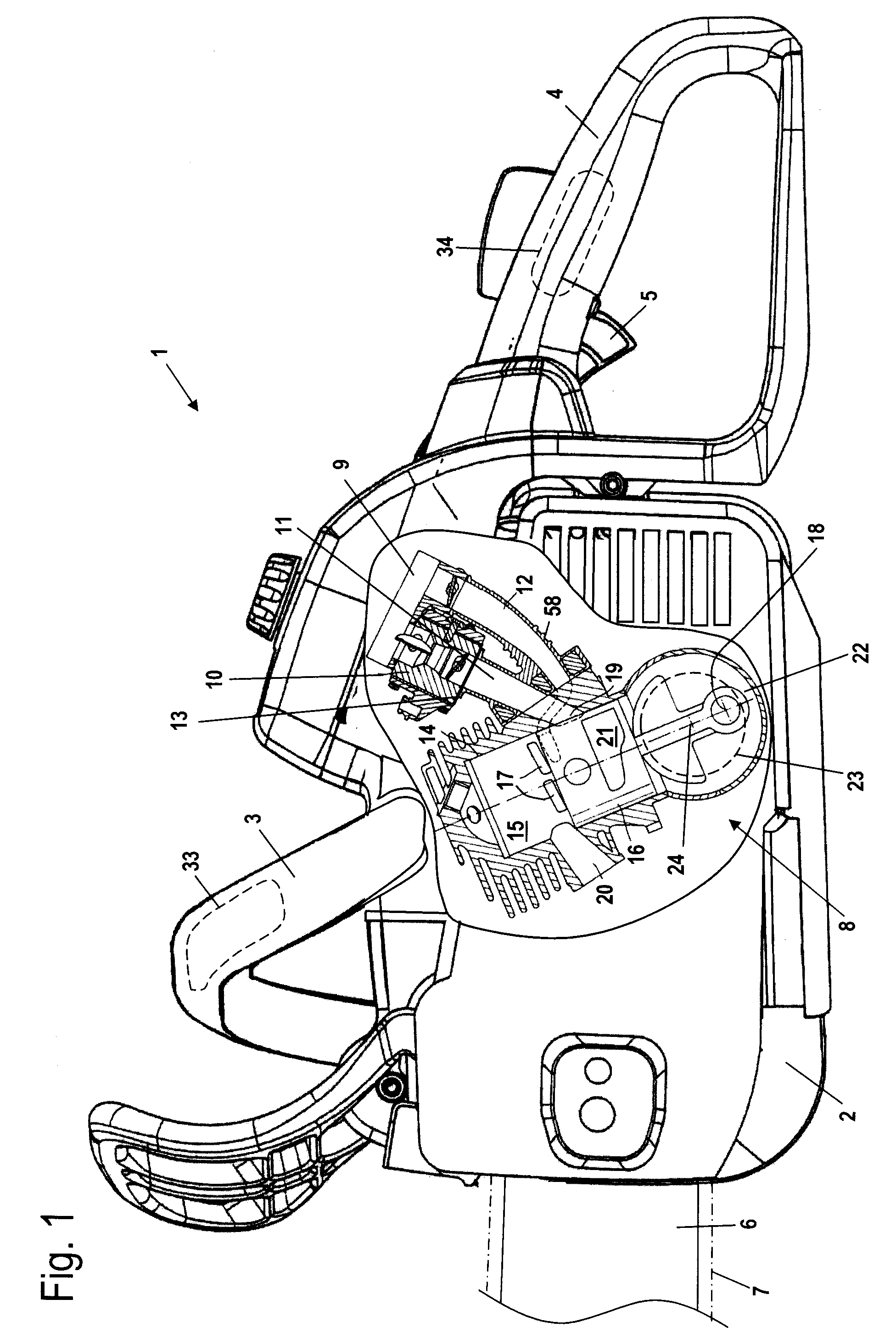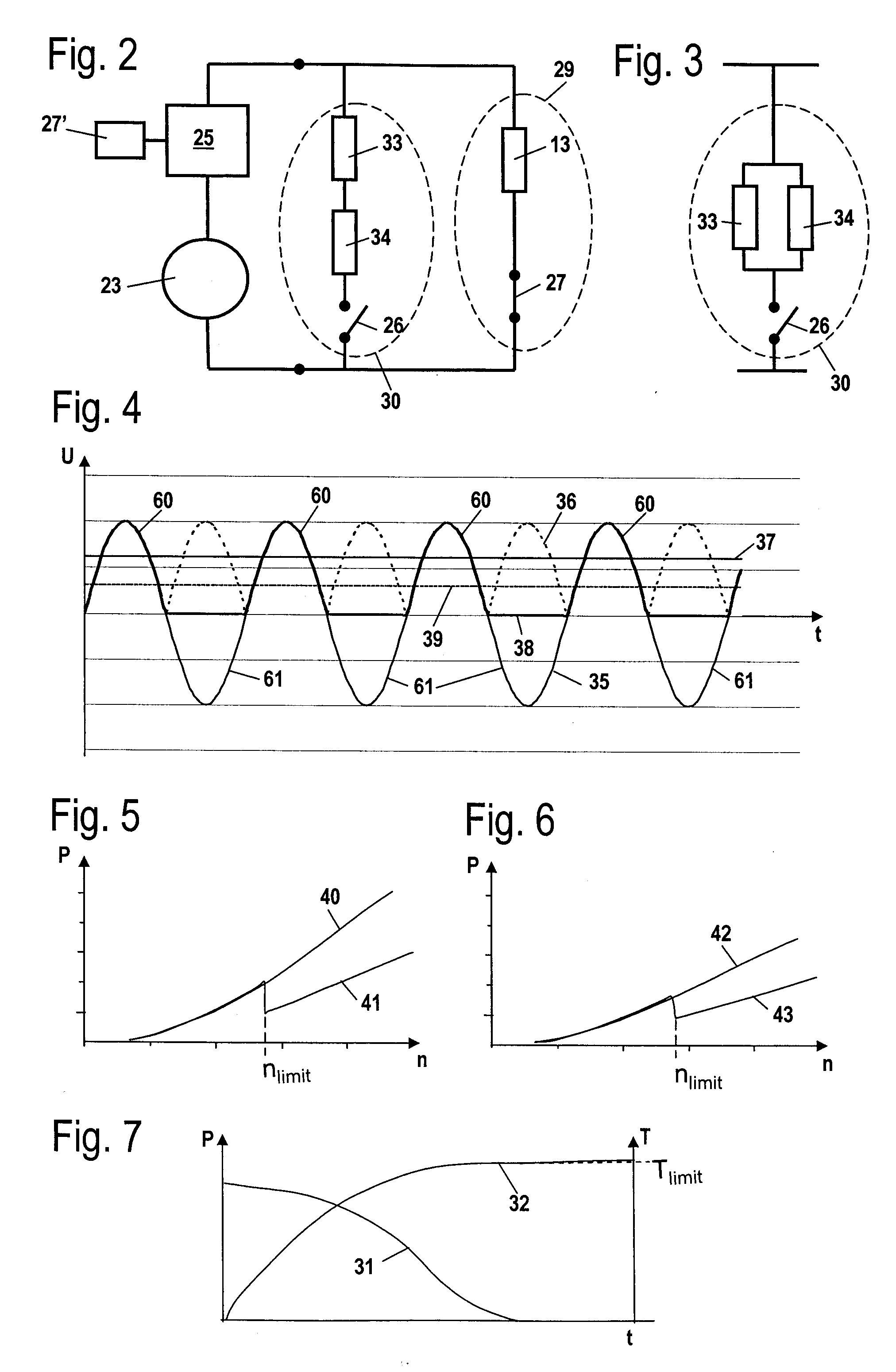[0007]Expediently, the operating parameter is the engine speed of the drive motor. In this way it is possible to supply the heating element at low engine speed with a sufficiently high power and to lower at high engine speed the
power level so that overheating of the heating element is safely prevented. A control of the power depending on the engine speed can be realized in a simple way. Because lowering the power is carried out in the control device, no constructive changes of the power tool are required.
[0008]Advantageously, the heating device has a temperature sensor for a temperature-dependent control of the power supplied to the heating element. In this way, the heating element can be controlled as a function of the engine speed and as a function of the temperature. A simple configuration is provided when the temperature sensor is an NTC (
negative temperature coefficient)
resistor. Advantageously, the temperature sensor is arranged at a spacing from the heating element. As a result of the spacing between temperature sensor and heating element, the temperature sensor measures the actual heat that is being transferred into the part and not the heat generated at the heating element. As a result of the engine speed-based control of the supplied power, the
delay of the
temperature measurement that is caused by the spacing between the heating element and the temperature sensor is acceptable because overheating is avoided by an engine speed-based control of the power. As a result of the spacing between the temperature sensor and the heating element, there are more
degrees of freedom with regard to the arrangement of the heating element and the temperature sensor which arrangement is usually problematic because of space considerations.
[0009]It is provided that the drive motor is an
internal combustion engine with a
carburetor and that the heating device is a
carburetor heater. In the case of a carburetor heater, overheating is critical in regard to the operation of the
internal combustion engine. In particular for a carburetor heater an engine speed-based control of the supplied power is therefore expedient. Advantageously, the temperature sensor is connected by means of a contact surface with the carburetor in a thermally conducting way. In order to eliminate as much as possible effects of the environment on the
temperature measurement, it is provided that the temperature sensor has a cover that thermally shields the temperature sensor relative to the environment with the exception of the thermally conducting connection through the contact surface. The temperature sensor measures thus essentially only the heat that is transmitted from the carburetor via the contact surface. The cover is advantageously a cap made from plastic material. Plastic material has satisfactory properties for
thermal insulation. A cap made of plastic material can be produced in a simple way and has only a minimal weight. Advantageously, the control device and the temperature sensor are arranged on a common support and the cover is attached to the support by a snap-on connection. The cover provides at the same time a mechanical protection for the control device and the temperature sensor with regard to damage and soiling.
[0013]Advantageously, the operating parameter is the engine speed of the drive motor. The engine speed-dependent control of the power for operating the heating element enables an adjustment of the engine speed-dependent generator power to the heating element. In this way, it can be achieved that sufficient power is available at low engine speed while at higher engine speed an excessive power supply to the heating element is prevented.
[0015]It is provided that the generator generates an alternating
voltage signal with which the heating element is operated. Advantageously, a control of the power is realized in that above a
limit value every other
half wave of the alternating
voltage is blocked. The blocked
half wave is not used for operating the heating element. Below the
limit value, for example, an engine
speed limit, each
half wave of the
induced voltage is transmitted to the heating element. Above the
limit value, blocking of every other half wave can be realized by means of an actively controllable element, for example, a
thyristor or a
triac or a similar device that transmits only positive or only negative half
waves to the heating element. In this way, a sufficiently great reduction of the power made available to the heating element can be achieved by simple means. Advantageously, control is done by
phase control. In this connection, the engine speed-based control as well as the temperature-based control can be realized by means of blocking every other half wave of the alternating
voltage signal and / or by means of
phase control.
 Login to View More
Login to View More 


